The XR311 chassis
This is a step not requiring a lot of efforts: only to install the steering servo, a receiver and the electronic speed controller. Most complicated would be to correctly tie the cables. Well, this was the general idea: doing it revealed to be a little bit more complicated than expected...
First, installing the electronic speed controller (TEU-101BK) and the receiver is not that simple since the holders they are meant to be installed in have a strange shape. But placing a wood wedge and using double-sided tape just solves the problem. Cable tying is not very difficult if you think about it first and always remember that the bodyshell closely fits the chassis central frame.
The steering servo is easily fitted with double-sided tape into its place, but doesn't let you fix it better. The servo saver concept was not invented yet so the only way to preserve the servo from shocks was to let it unscratch from the chassis. I decided to reinforce this by fitting a piece of foam to fill the gap: this way, I hope the servo will be better fitted and I won't risk to loose the steering control.
All cables tied and chassis ready to go
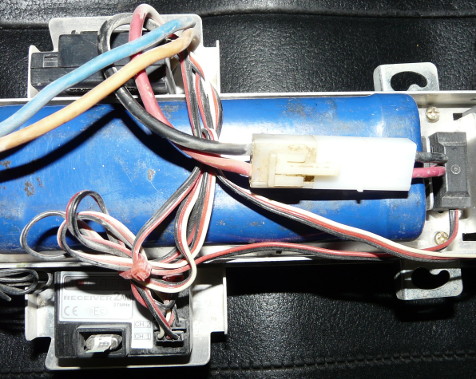
The foam to reinforce the steering servo stay
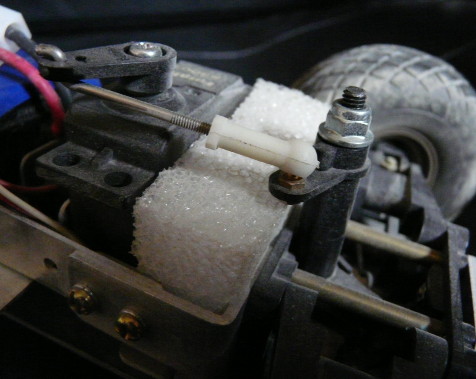
During the assembly process, I noticed a problem with the rear suspension: the default setup was way to soft. So I got the pleasure to discover how torsion bars work. Even if the manual is very clear about it, tuning the suspension is pretty difficult for a human being who only has two hands ![]() , especially because the setup must be the same for the two wheels. With calm and patience you can do it, but you'd better find the correct setup at the first try. On mine, I found that a 1/3rd turn setup was the best choice.
, especially because the setup must be the same for the two wheels. With calm and patience you can do it, but you'd better find the correct setup at the first try. On mine, I found that a 1/3rd turn setup was the best choice.
The rear drivetrain torsion bars
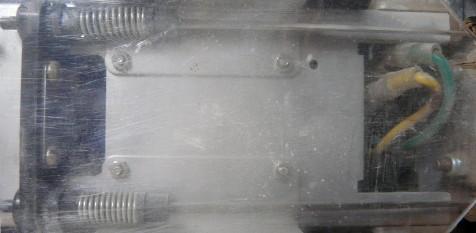
Alternative suspension idea
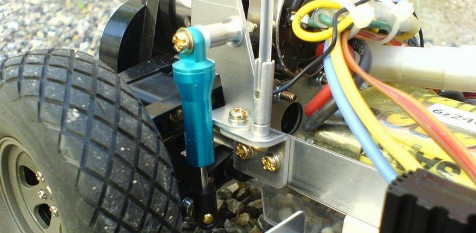
To setup up the suspension, you need to turn the black stopper (on the left) and refit it while applying the desired torsion on the bar itself. It seems easy to do, but quite delicate to perform. The first photo shows the re-released XR311 metal torsion bars: they are the same on the original version, but the torsion bars are in plastic.
These original torsion bars tend to wear quickly so most of the original XR311s that managed to time travel till our days have a problem with them. When searching for information on this model, I found a very interesting suspension alternative made by a Tamiyaclub member. OK, remember the solution but forget the blue anodized dampers that really don't fit the model general look.
The XR311 bodyshell
This is the most complex bodyshell I have ever seen in RC modeling: it is a very high detailed static model, nothing else. Dozens of parts, most of them being very small, are to be glued on it: these will undoubtedly suffer from running conditions. Not even considering possible shocks or any stupid jump attempt, running vibrations will do stress the glue that holds them. From meshes on the motor boot to the front lights, the whippers or the mirrors, the list of possible candidates to be lost while running is long... very long.
Furthermore, the bodyshell on my XR311 got cared by its previous owner who performed a splendid paint job on it, unfortunately he never finished it.
First step, painting the driver, and first surprise: the arms need to be very carefully glued as the hands are meant to hold the steering wheel. Easy to say, but you'll need several tries to find the correct angles. Then painting. You'll need a very thin brush, a black pen for details, a cutter knife blade in order to precisely place paint drops and to reach those unreachable areas. But most of all, you'll need time... a lot of time and patience. Painting a driver like Albert Attaboy on the Monster Beetle takes about one hour: I spent 4 hours for the XR311 driver.
1st try: too light
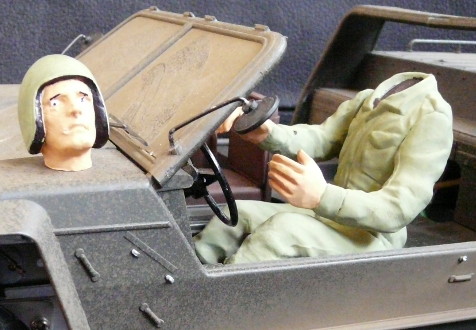
Second try a little darker
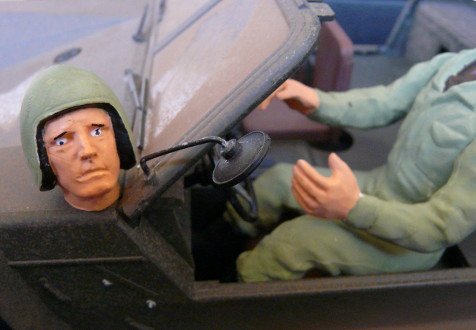
But the driver is the easiest to make compared to the bodyshell in itself: I just spent days trying, gluing parts, ungluing and re-gluing to better fit them. There are so many details that you can't hardly see any difference after you have been working for one hour long. But the moment when everything is assembled and glued finally arises: the last part to fit is the roof. It should be the last since once you fit it, you can't access anything else in the cockpit and to the front body fixes.
Hours and days later...
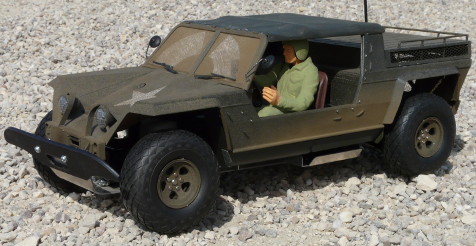
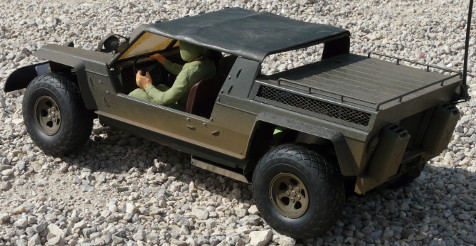
Cockpit detail
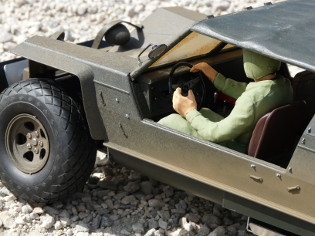
Motor boot detail
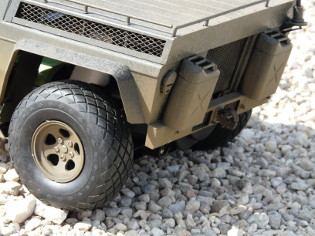
Rear view, the alternative antenna pipe location
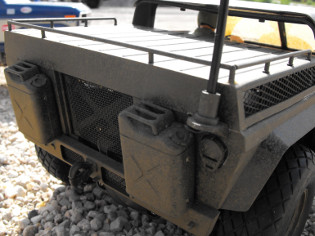
I am very pleased with the final result: the perfect paint job performed by the previous owner is the key of that perfect result. To provide even more realism, I just move to the antenna pipe to the rear of the bodyshell: it undoubtedly takes more time to pass the antenna wire, but I think it's better this way. Anyway, the bodyshell is such a pain to fit on the chassis that spending a few additional minutes passing the antenna wire this way is no big deal at all ![]() .
.
One question remains: does this over 30 years old piece of history run, and better said, how does this run? What about the bodyshell on which so many hours have been spent: will it resist?
First run with the XR311
Running an XR311 can't be improvised: of course, you'd better take care where to drive and check the sky before leaving, but most of all, you'd better carefully prepare the model before. Once the bodyshell is fitted on the chassis, forget the idea of accessing anything inside like the electronics or the stick pack connector. Once on the track, you should only have to set the switch "on" as the body is quite painful to fit: being so fragile, it is not wise to even consider manipulating the model once there.
So that first run occurred on a large parking lot made of gravel. The track was just made by placing cones and no obstacles were in the way.
First I carefully take the XR311 off the box where it was secured with foam for transportation to the track, I switch the radio on, same thing on the car switch, I check throttle and steering work fine and carefully place the old lady onto the gravel...
WOW! The general handling is just astonishing: quite fast, easy to control, the most beautiful is the way the suspension works. The torsion bars concept provides state of the art realism! The XR311 is a very highly detailed and realistic model, but it is also a moving RC model that just looks like its real-size counterpart: the suspension work of this model is simply... natural.
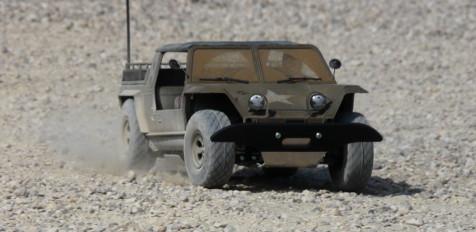
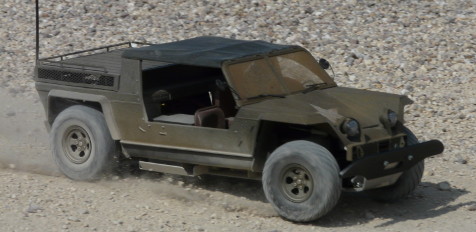
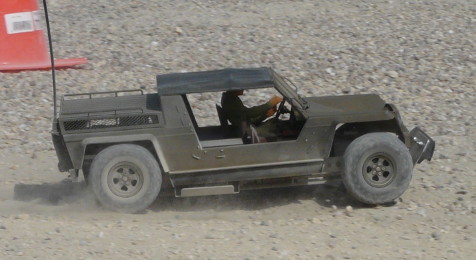
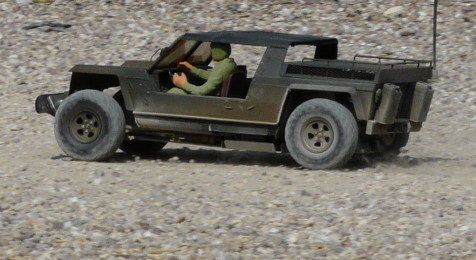
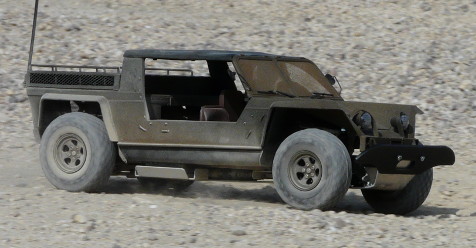
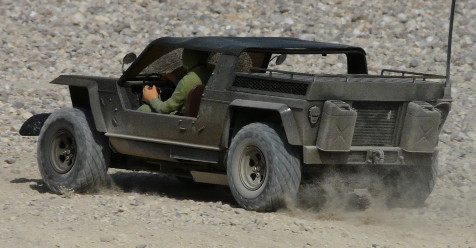
I must admit that I was very surprised by the handling: the lack of differential and those strange torsion bars didn't help me feel confident before running it. But the result goes far beyond any expectation: the XR311 is sweat and easy to drive, it looks more than realistic and no matter how long it took to assemble and paint it, I just love it!
Of course, being that fragile, I drove it differently from any other of my models: forget any performance related idea. We're talking about the pleasure to drive around with a piece of history and to make the most out of the feelings it provides.
To be honest, I stopped running after 15 to 20 minutes because I wanted to check if all the parts were still there. No bad surprise, just the double-sided tape fitting the roof that is not strong enough. And I will have to think about an alternative solution to fix the front side of the bodyshell to the chassis since the mounts got lost.
As you can see on the photos, the track was very dusty: good for realism and the nice pictures, but it now requires a serious cleaning operation ![]()
"Vintage touch" photo by my friend Boo54
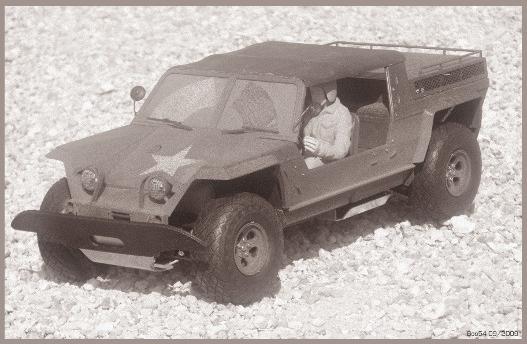
A video made by Teamneogordini




